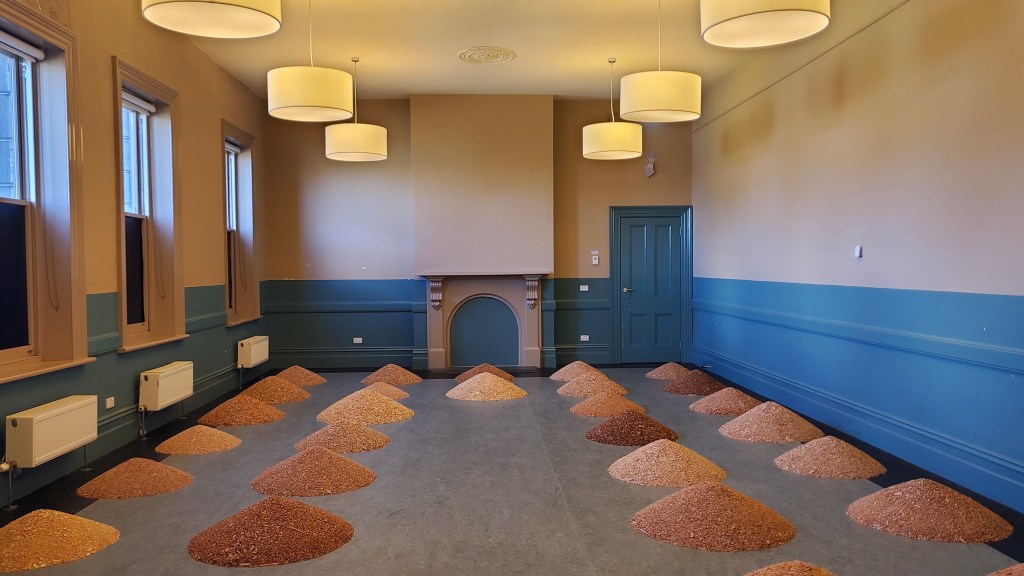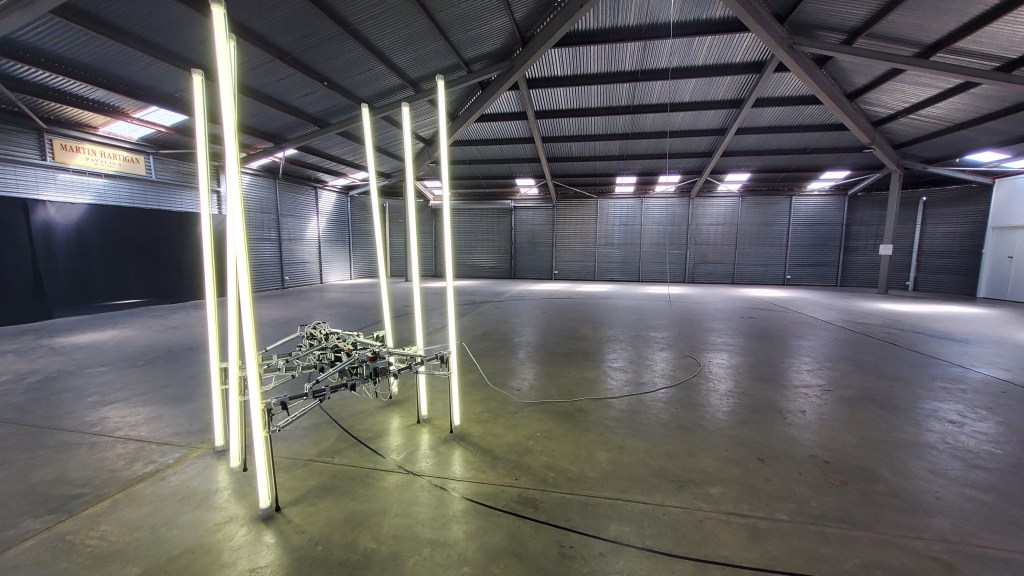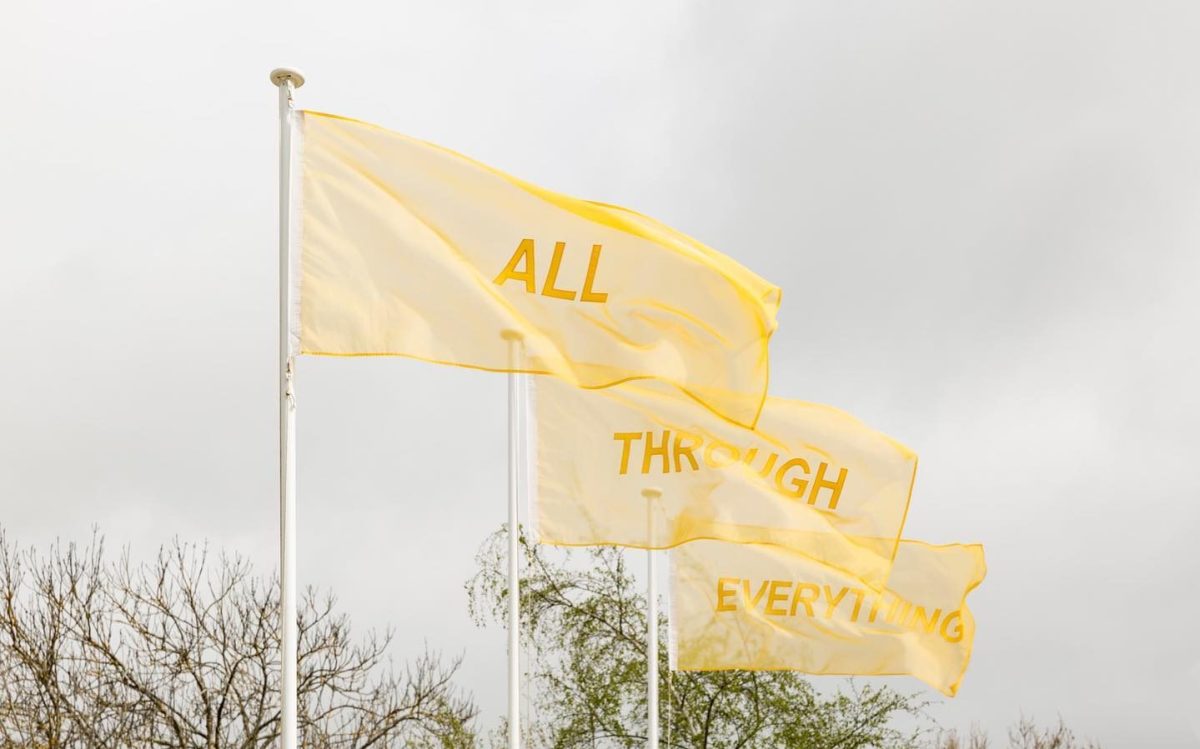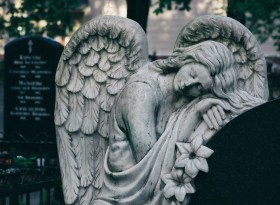There is beauty in being en route to see art; arriving at the destination to soak up in the presence of the work is glorious, but the in-between time where you are transitioning out of one work to the next, to enjoy the fresh air before driving all of your attention into the next piece can be invaluable towards the whole viewing experience.
This is what the Kyneton Contemporary Art Triennial (KCAT) draws out in full. Scattered (with careful curatorial considerations) around the charming regional town, the second iteration of KCAT presents 11 artists who have each been commissioned to create context-sensitive works under the overarching theme ‘Holding the Circle’.
Perhaps one of the drawcards of KCAT is the triennial format, which gives organisers and participating artists the time to immerse themselves in Kyneton, scout out potential sites and forge connections with local collaborators. This advantage certainly comes to the fore in the breadth of contextually nuanced works presented.
Housed in the Kyneton Mechanics Institute (right opposite KCAT’s event hub where most begin their journey), local artist Ravi Avasti’s 34 Seats re-presents 34 chairs donated by the Kyneton community as organised piles of shavings. No longer discernible from their original forms but holding a ritualistic aura, the cone-shaped piles that range from the cream of light oak to the tan of walnut almost resembles skin colour – once deconstructed, it becomes the culmination of our similarities.

In the adjacent hall, Macedon Ranges artist Adam Lee invited local artisans to make ‘prayer blankets’, each paired with five of his surreal and hypnotic paintings: The Third Body (Chuppah), A Veil (Apocalypse), Ghost Smoke (Annunciation), The Weeping Tree (Lamentation), and My Subterranean Joy (Requiem). As though they are facing an altar, visitors are invited to remove their shoes before entering as each pairing act as a backdrop for meditation.
Slowness and contemplation flow throughout the triennial, even as the excitement of KCAT’s opening day brews among the art-viewing crowd. The works are thus an invitation that encourages genuine and critical encounters.
Away from the buzz of the event hub, Steven Rhall’s Taungurung Story (Steven Rhall Quits Art) is entangled with the interiors and history of the 19th century RM Begg schoolhouse, now owned by an aged care provider. Infused with the warm yellow from its walls, electric cords hang from ceiling fans as five screens follow the circling path of Rhall, who holds a cord leading back to the viewer. Imbued with a feeling of being transported, Rhall acts as a conduit for cultural knowledge and draws upon his Taungurung heritage.
Also operating on a literal circular path is Michael Candy’s Cryptid in Watts Pavillion at Kyneton Showgrounds, its metal interiors perfectly suited to the kinetic light robot as it makes meticulously calculated steps with legs of fluorescent light.

Curiously, the utilisation of the material landscape and those that capture Kyneton through video comes in equal parts at KCAT No.2. Hanna Tai’s three-part outdoor installation Passing is an example of the former, which includes a native garden outside the Scout Hall and cosmic soundtrack at the Mollison Street bridge underpass by local choir Pollyphonics.
Eugenia Lim’s Shelters for Kyneton (triadic transfer) is a single channel video work screened at Freemansons Hall with Macedon Ranges Shire Council Mayor Cr Jennifer Anderson and transfer station worker Steve Boulter part of the cast. While inherently exploring the dynamics of power, class and authority, the work channels an interconnected ecology of care and collective action.
A similar theme runs through Hannah Brontë’s video and projection installations, LOVE LETTERS to your intuition and mi$$–Eupnea at Kyneton Stockroom, the only gallery location and worth a visit in its own right.
Those who walk around town might also encounter the street signs by Sara Morawetz, each location pinning Kyneton’s centre, anti-centre and edge. While unable to travel to Kyneton, Morawetz utilised geographical and population data to familiarise herself with the town. Like an Easter egg hunt (they are the only works not marked with KCAT’s orange sticker), Morawetz describes the project as ‘an absurdist gesture, a site-specific response to a place that I have never been’.
Though working independently across geographies, there is discernible synergy between the works of the 11 artists, whether they are holding the circle of life, nature or community. KCAT, as a framework, is an invitation for local and localised practices to contest, re-present and activate historic contexts through a contemporary lens.
After its inaugural run in 2018, the organisers behind KCAT – a team of diligent local curators and artists – said ‘while KCAT is, in many ways, a spontaneous coalescence of energies over a short period of time in a small space, it is also a guiding formula for replication across other locations.’
In some ways, the triennial presents a careful balance of freedom and constraint, old and new, indoor and outdoor – in the end, you leave with a sense of fulfilment with hopes to return.
With a fruitful showcase of context and engagement-orientated works, KCAT No.2 exemplifies the breadth of potential for the triennial, and indeed, a prototype for similar artistic endeavours in ‘peri-urban’ centres.
Kyneton Contemporary Art Triennial (KCAT) is open from 19 – 27 March, ticketed (children enter free).
The 11 commissioned artists are: Ravi Avasti, Adam Lee, Sara Morawetz, Emily Parsons-Lord, Eugenia Lim, Michael Candy, Simone Slee, Hannah Brontë, Katie West, Hanna Tai and Steven Rhall.






